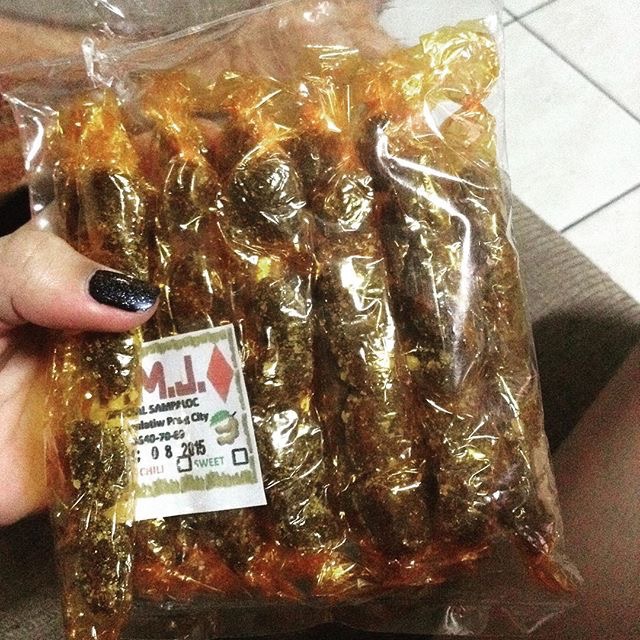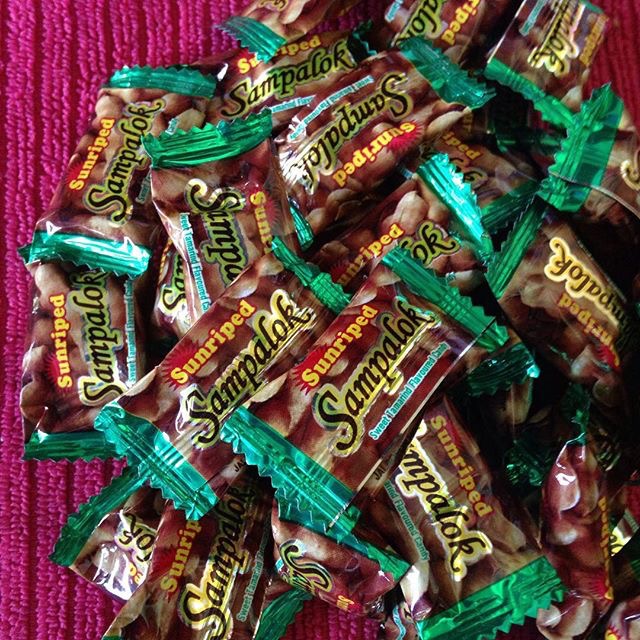Tamarind Candy

Living in a country with round-the-year good weather has spoiled Filipinos with easy access to a large variety of native fruits, many of which are naturally prepared as candy.
The staple fruit candy in the Philippines is tamarind, a favorite throughout Southeast Asia, all the way to the Middle East. Simply prepared with salt and sugar, and occasionally with sweet potatoes as a filler, tamarind candy is the sort of simple food pleasure that never fails to evoke nostalgia.

Tamarind is a pod-like fruit known for its sweet and sour taste. Younger tamarind fruit is used as a souring ingredient in the Philippine dish sinigang.
It is the ripened tamarind fruit that is made into candy. The pulp is mixed with sugar and then either encrusted with white rock salt or dusted with finer white sugar. There could also be the application of both sugar and salt, one after the other.
Tamarind candy is often sold as a set of five or six balls lined up adjacent to each other, then wrapped in yellow-orange cellophane.

The salt and sugar are to temper the sourness of pulp. Seeds can be left in or removed. Candymakers working from scratch usually leave the seeds in. Home cooks who opt to use a batch of store-bought tamarind paste for convenience don’t have the seeds to worry about, as the manufacturer has usually removed them in advance.
The accidental swallowing of a tamarind seed has long been an issue that has kept Filipino children up at night, having been constantly warned by parents that a swallowed seed is likely to sprout and start growing inside the digestive tract.

Popular brands of sampalok candy are Wang Derm, Bells & Flower, Leelin, Tropics, Aling Conching and Aling Auring’s. The flavors available are various permutations of classic sour, sweet, salted and spicy.



LOVE sampalok candy more than anything. That combination of sour and sweet / salty is to die for.
Where to get the sunriped sampalok candy?
hi Please Contact Ms Carina Dugenia 09209229572
#ZampaloKing